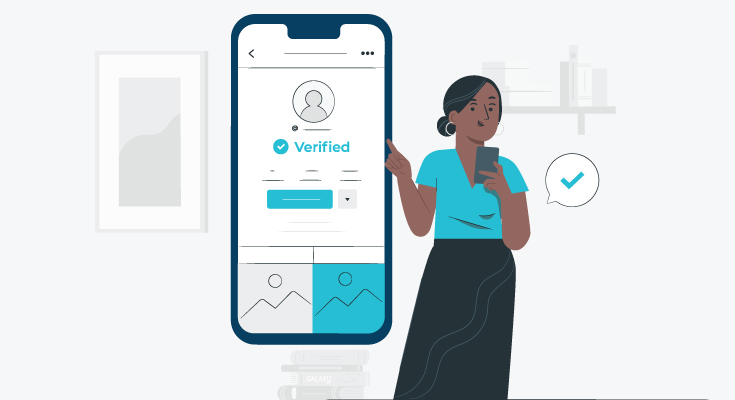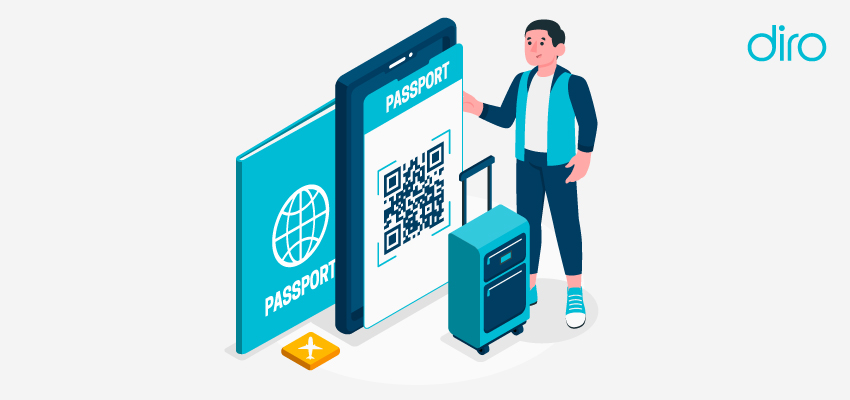Is Online Document Verification for Digital Services More Important Than Ever?

The process of digitization is growing widely. Even the global smartphone users have reached up to 2.9 billion, and the number is rapidly growing. More and more customers are demanding faster digital services like online banking.
Nearly 40% of all customers are more likely to obtain a particular digital service from businesses they are associated with. Regardless of the industry type, most businesses are trying to provide digital solutions for a better customer experience. The new customer needs and digital services demand businesses to have strong KYC solutions in place to reduce fraud. This is more than just a demand for companies operating in the financial industry. One way to achieve it is by leveraging technologies like online document verification, AI, machine learning, or RPA.
Document verification is an integral tool in the verification of a customer’s identity. Online document verification is needed whether it is for complying with KYC regulations, or it is for account opening.
In the old days, documents were verified using manual methods, which involved manual cross-checking of document data with other sources. Digital document verification reduces that hassle by verifying customer documents instantly.
Basics of ID Verification
In order to verify customer ID during account opening, a variety of documents are to be verified. There are a number of steps to be followed involved in ID verification.
Here are all the basics of ID verification that you need to know.
- Document Verification Stage 1
In this stage of document verification, the account opener is a regulated entity. These include banks, NBFCs, Insurers, security firms, etc. The user then submits documents to the account opener entity. These credentials are then confirmed to reduce the risk of fraud as much as possible. Once the information is verified, the customer is granted access to a certain service or account.
- Document Verification Stage 2
The first step is completed when documents are verified, and customers are granted access to services. The first stage of document verification is simple, but the second stage is tough. Most document verification processes leave their customer data vulnerable to stealing of information. Online document verification is the most common method of conducting identity fraud by fraudsters.
How Big of a Threat is Identity Theft?
Identity fraud happens when a person gains access to crucial identity information about a particular person. That information is then used by fraudsters to verify themselves as someone else and commit several frauds.
The main goal of fraudsters is to use someone else’s identity as theirs and once the verification processes clear them as the person they claim to be, the fraud begins. By assuming someone else’s identity, they can take loans, apply for a credit card or open new accounts and do so much more. But how do fraudsters and criminals get access to confidential information? This information should only be accessible by one person by logic right? So how do fraudsters gain access to them? The answer is simple, large-scale data breaches.
In previous years, there have been a number of large-scale data breaches. A number of big businesses with huge customer records, like T-Mobile, Pfizer, Warner Music Group, Twitter, Zoom, GoDaddy, and others have experienced data breaches in 2020.
To put these data breaches into context, the volume of records exposed online increased by 141%. With more and more companies taking part in the digitization wave due to the Covid-19 pandemic, more customer information online is available. To make matters worse, digital literacy is low and not a lot of people don’t understand how to secure their information.
The threat of identity fraud is a major concern for the financial industry. Fraud losses are up by 13% in 2020 over $16 billion has been lost to Identity theft in just the last year. In other parts of the world, online fraud consists mostly of cases of identity theft.
Financial institutions must take preventive measures to protect every step of the information collection process. To fight ID fraud, organizations need to learn more about it and be prepared for it by leveraging strong online document verification technology.
Types of Fraudulent IDs
The rise of technology has led to different methods of generating fake IDs. Fake IDs come in all types of shapes and sizes. The most common types of fraud ID documents are:
- Forged IDs
There are IDs on which some information has been changed illegally, to modify the ID document to match the person who’s holding the ID. This could involve:
- Changing the variable information
- Inserting real pages from other IDs
- Removing pages or information
- Applying false stamps or watermarks
- Using technology to alter information on an image of an original ID.
- Counterfeit IDs
Counterfeit IDs are total reproductions of an entire ID, in which the fraudsters will use a template of an ID document and add fake information to commit fraud.
- Stolen Bank IDs
These are non-personalized bank IDs that fraudsters steal from the supply chain. Fraudsters then add their information to the ID to commit fraud.
- Illegally Obtained Real IDs
These IDs are obtained after supplying authorities with fake information. This information could be photos of someone else, fake personal details, or fake verifying documents.
- Compromised or Sample IDs
These are legally valid IDs that are available online either as sample IDs or doctored IDs. These IDs are usually obtained by hackers. The most common types of these compromised IDs have been created using information illegally obtained using data breaches or using sellers on the dark web.
Real-Time Document Verification: How it Works?
Real-time document verification uses a number of techniques to authenticate documents for accuracy and user-friendliness. With online document verification, banks and financial institutions can fix their weak points. Banks need to search for the best technological solutions like DIRO’s online document verification.
DIRO’s online document verification technology captures document data from the original web source. The verification solution offers instant document verification for less friction and a better customer experience during onboarding.












